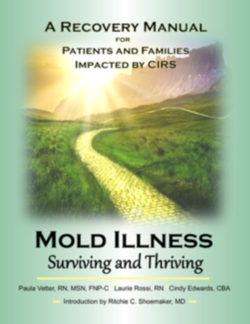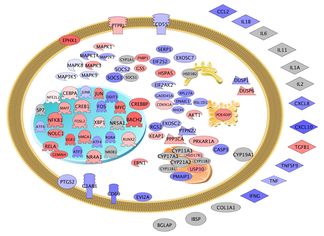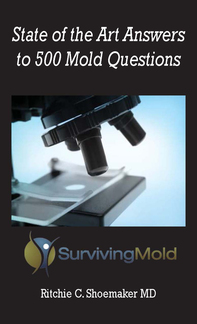Common Questions & Answers about Cholestyramine (and why it’s the most effective option out there).

Cholestyramine (CSM) is an FDA-approved medication used in an initial stage of The Shoemaker Protocol because it has a unique affinity for binding with biotoxins and effectively eliminating them from the body.
CSM has been used safely for over forty years in millions of patients who have taken the medication for extended periods of time for high cholesterol. The Protocol uses CSM for shorter, limited periods of time and works well with minimal side effects for the vast majority of patients.
CSM has been extensively tested in multiple clinical trials involving patients with chronic biotoxin illnesses. The benefit of using CSM has been confirmed by two double-blind, placebo-controlled crossover studies.
The Protocol treatment attempts to anticipate any possible uncomfortable side effects, complete with suggestions for remedies to keep on hand “just in case.”
Here are a few questions that come up regarding the use of CSM. If you are in treatment, always discuss any questions you have with your practitioner as well.
Can CSM effectively be substituted with alternatives such as charcoal, clay, chitosan or any herbal remedy?
For most patients, CSM works very well. It has few negative side effects when used as directed. However, patients have sometime sought to get the same effects from plant-based alternatives.
There has not been published, peer-reviewed scientific studies demonstrating benefit from CSM substitutes. The reason CSM works so well, is that it’s positive charge (+) binds tightly with biotoxins, which are (-).
From the limited findings available it’s been shown that substitutes such as charcoal, chitosan and clay have the same (-) charge as the biotoxins, therefore a strong binding bond is substantially less effective or not likely.
For the few individuals who have extreme sensitivities to CSM ingredients, the dosage of CSM can be altered to a lower dose and gradually build. Welchol has also been substituted (with less effectiveness). Another option is to find a compounding pharmacy that will offer CSM in a pure resin form that allows the full treatment without additional additives or ingredients.
What are the possible GI side effects and remedies?
While taking CSM can cause constipation, bloating or bowel discomfort, many CIRS patients experience diarrhea or soft stools, and CSM can provide a welcome benefit.
If there are GI side effects, supplementing with high-dose fish oil 1-2 weeks before treatment, as well as during therapy, can minimize the side effects.
To reduce constipation, patients often simply increase their fruit and fiber products (such as psyllium or Metamucil). Prunes, magnesium citrate, or Miralax in stubborn cases, can also be used as needed. Drinking adequate water is also essential.
What can be done to help with acid reflux, heartburn or indigestion from CSM treatment?
These effects tend to happen early on in the treatment, but the symptoms reduce within a few days for most patients. Mixing CSM in apple or cranberry juice or dissolving it in lukewarm water can reduce heartburn.
Once the biotoxins are removed with CSM, will the body naturally heal on its own? Why are there so many more steps in The Protocol?
Many body systems are impacted by biotoxins with down stream effects. The Protocol takes the patient through sequential treatments to support the body’s fullest return to health. Patients may be experiencing the effects of low MSH levels, suppressed VEGF, disregulation of T-cells, brain fog, or elevated MMP9, to name a few disruptions in the body that can be remedied by following The Protocol.
Not all patients will need all the steps. And some will find relief after the CSM treatment phase. Following the Protocol and testing format will also help to keep tabs on re-exposure or if any of the symptoms might be from another cause (such as gluten intolerance).
Shoemaker Protocol Certified Practitioners and Proficiency Partners will provide further details on dosage and how and when to take CSM for most effective results.
To find out if you may be experiencing CIRS/biotoxin illness, check your symptoms with an online Visual Contrast Screening (which reads vision functions often impaired by biotoxins) now. It will give you a pass or fail, indicating if follow-up with a Protocol practitioner is needed.
If you have more questions about CSM or other medications used in the Protocol, Dr. Shoemaker has created medication learning modules that provide in-depth information. Or you can purchase compiled Q&A volumes with Dr. Shoemaker who provides answers to a multitude of common questions.
The information in this article was in large part excerpted from the book, “Mold Illness: Surviving and Thriving” a comprehensive recovery manual written by a team of uniquely qualified CIRS experts. The team includes, Paula Vetter, a Shoemaker Practitioner and holistic family nurse practitioner with over 30 years of experience in both traditional and functional medicine; Laurie Rossi, a registered nurse and CIRS patient who has worked with Dr. Shoemaker personally. She has also helped hundreds of clients thrive with CIRS; and Cindy Edwards, a general building contractor who extensively studied and obtained the specialized knowledge to assess buildings and remediate them successfully for CIRS patients.
Featured Resources for Mold Treatment
GENIE (Genomic Expression: Inflammation Explained) Now Available!
Yes, the test is now here. After ten years in concept and three years in development and validation, the application of transcriptomics to confirm hypometabolism (see below) is available. Based on the work of James Ryan, PhD
CRBAI Sponsored Transcriptomics coming soon!
We are incredibly excited to share a new service for our members available from participating physicians!
Surviving Mold Down Under
Through Dr Shoemaker’s work we can see that the evidence for an association between environmental exposure to biotoxins and inflammatory sequelae is well documented and predictable in individuals with certain genetic patterns whose physiology has been ...
 State of the Art Answers to 500 Mold Questions EBOOK
State of the Art Answers to 500 Mold Questions EBOOK
Subscribe
Sickened by moldy buildings? Need facts and answers fast? Here is your guide: State of the Art Answers for 500 Mold Questions. Thorough and reliable, “500 Answers” is as current as one can find on a subject where bad information abounds.
NeuroQuant Paper Announcement
The Center for Research on Biotoxin Associated Illnesses of Pocomoke, Maryland is pleased to announce that its newest academic paper entitled “Structural brain abnormalities in patients with inflammatory illness acquired following exposure to water-damage...

.jpg)


